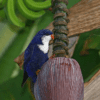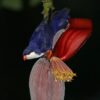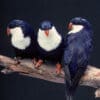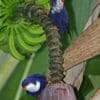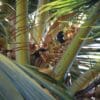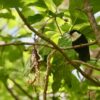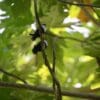Blue Lorikeet
Also known as:
Tahitian Lory, Blue Lory, Tahiti Lorikeet, Indigo Lory, Kurāmo’o (Aitutaki), Nunbird (Aitutaki)
Also known as:
Tahitian Lory, Blue Lory, Tahiti Lorikeet, Indigo Lory, Kurāmo’o (Aitutaki), Nunbird (Aitutaki)

Vini

peruviana
Size:
18 cm (7 in)
Weight:
31-34 g (1.1-1.2 oz)
Subspecies including nominate:
one
Colour Adult:
Both adults dark purple/blue; paler blue on long feathers of crown and occiput; white face to upper breast. Beak orange. Eye yellow/brown.
Colour Juvenile:
As in adults but underparts dark grey/blue, no white. Beak black. Eye dark brown.
Call:
Repetitious and high-pitched. Also three syllable whistles.
More Information:
Content Sources:
CITES
BirdLife International
Cornell Lab of Ornithology/Birds of the World
A Guide to Parrots of the World, Juniper and Parr, 1998
Parrots: Status Survey and Conservation Plan 2000-2004, Snyder, McGowan, Gilardi and Grajal, 2000.
Vanished and Vanishing Parrots, Forshaw, 2017.
Parrots of the World, Forshaw and Cooper, 1977.
Parrots of the World, Forshaw, 2006.
Parrots in Aviculture, Low, 1992.
Parrots: Their Care and Breeding, Low, 1986.
Captive Status:
Extremely rare.
Longevity:
—
Housing:
Small, planted aviary, with many branches for the birds to climb on.
Diet:
Nectar, either commercial or homemade (mixture of lactose-free baby cereal, honey, and malt extract or molasses, mixed with filtered water, made fresh once or twice daily); fruits such as: pomegranate, apple, pear, orange, cactus fruits; also sweet corn.
Enrichment:
Provide areas for bathing, provide lots of branches for climbing, swings, ladders and unsprayed flowering branches.
Nest Box Size:
Vertical box 4″ x 4″ x 12″ (10.1 cm x 10.1 cm x 30.5 cm)
Clutch Size:
2
Fledging Age:
9 weeks
Hatch Weight:
—
Peak Weight:
—
Weaning Weight:
—
World Population:
6500-9400 individuals, decreasing.
IUCN Red List Status:
Vulnerable
CITES Listing:
Appendix II
Threat Summary:
A BirdLife “restricted-range” species. Extinctions have occurred on many islands within this species’ range. Is affected by predation from colonised black rats, cats, and swamp harriers. Increasing hurricane activity also puts it at risk (Cyclone Pat in 2010). Although trade is illegal, birds are still captured and sold on Rangiroa. Habitat loss through conversion to tree plantations, agriculture and urbanisation also presents a threat, as the species relies on dead trees for nesting. Trees may also be lost through sea level rise as a result of climate change.
Range:
Occurs on Society Islands and W Tuamotu Archipelago; formerly further afield. Introduced to Aitutaki, S Cook Islands.
Habitat:
Found in coconut plantations or gardens with flowering banana and mango trees. On Aituaki, where introduced, this species prefers mixed woodland with banana trees and coconut palms, plantations with shade trees and tall forest.
Wild Diet:
Diet includes pollen, nectar and soft fruits; flowering plants and their fruit such as coconut, banana, hibiscus, mango, Morinda citrifolia, Tournefortia, and leaf shoots of mango.
Ecology and Behaviour:
Relies on the coconut palm Cocos nucifera for feeding and nesting. Are very active. Seen in small groups of up to 10 birds flying between flowering coconuts. Birds can be confiding.
Clutch and Egg Size:
2 rounded eggs, 19.5 x 17.0 mm (0.7 x 0.6 in)
Breeding Season:
December-January recorded. Nest is in tree limb hollow or trunk cavity.
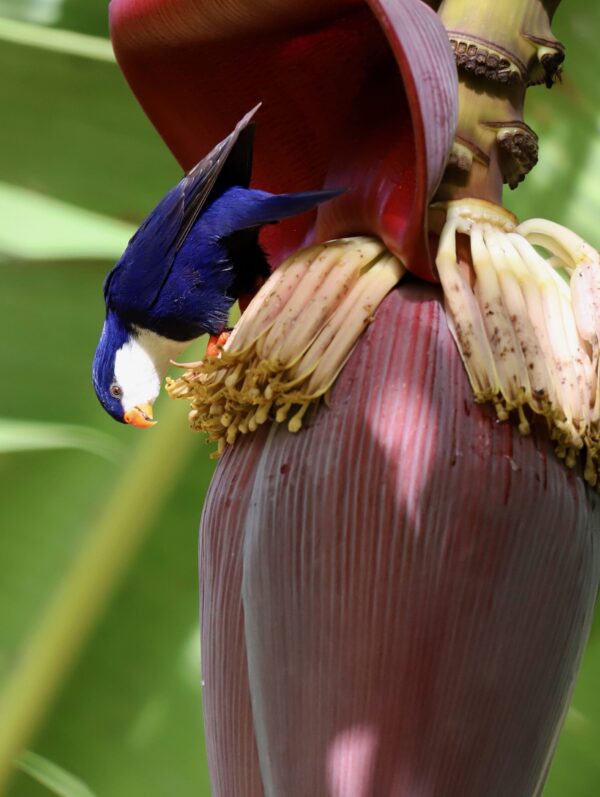
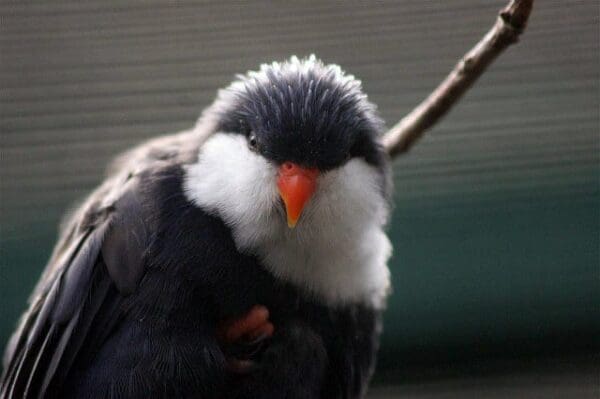
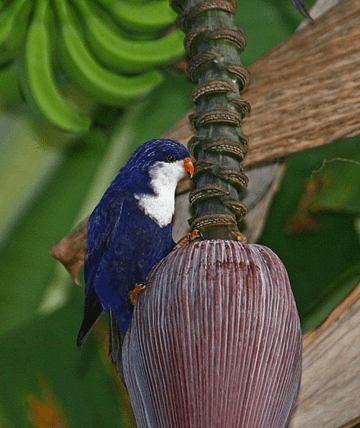
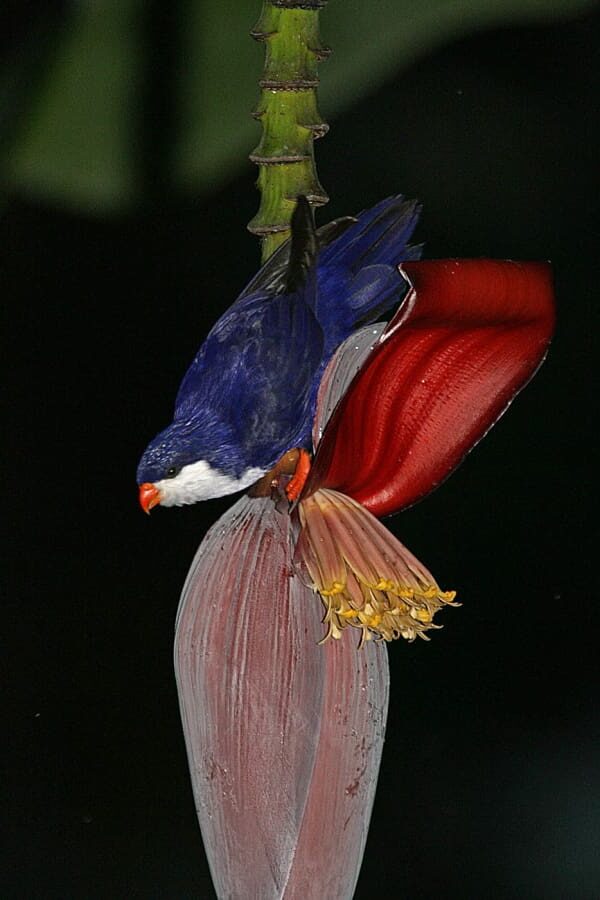
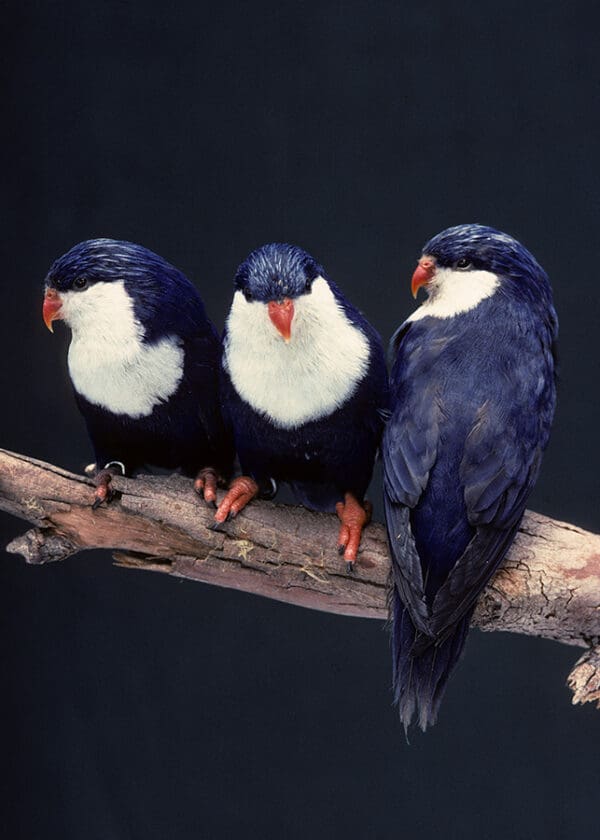
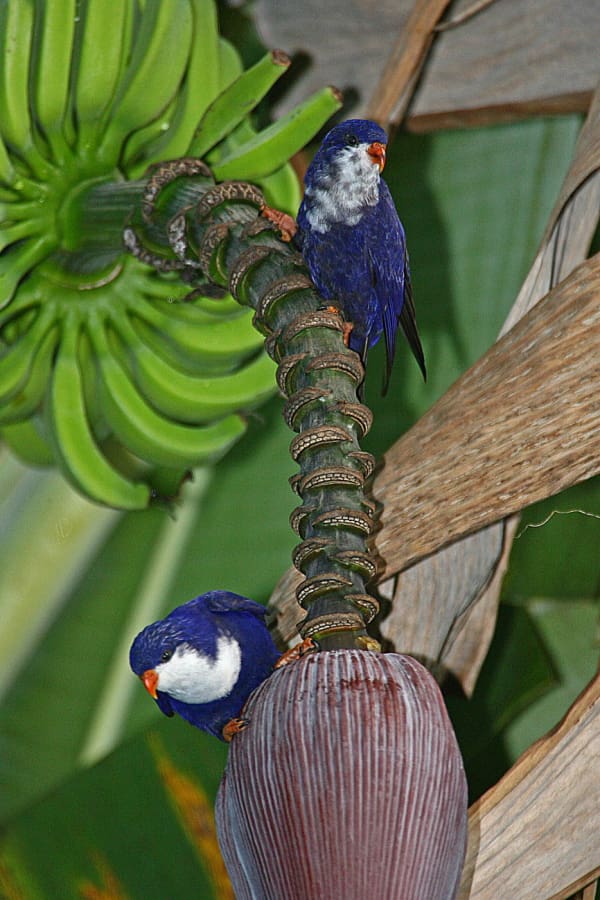
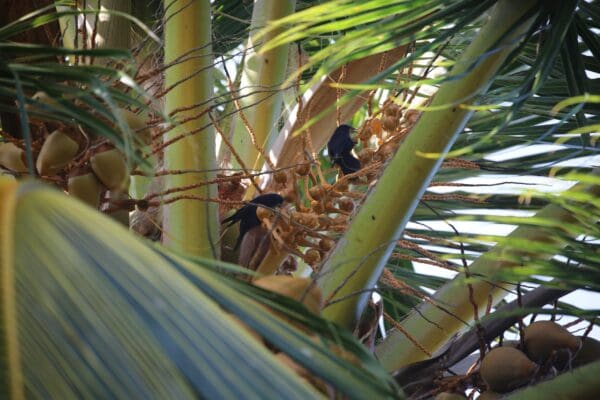
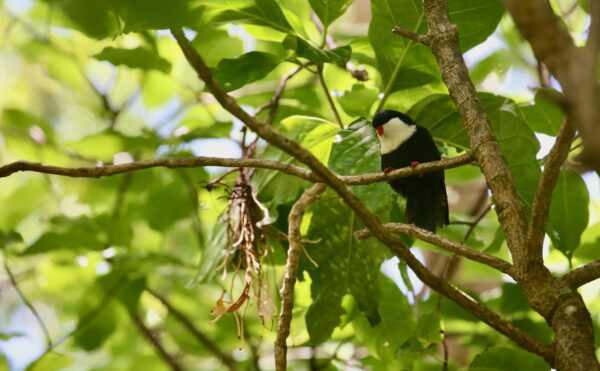
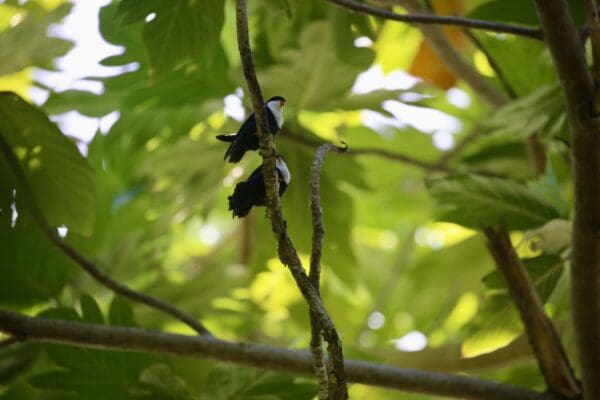
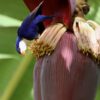
![© Pierre de Chabannes (also at www.photozoo.org) (originally posted to Flickr as Vini peruviana) [CC BY 2.0] via Wikimedia Commons A Blue Lorikeet closeup](https://parrots.org/wp-content/uploads/2023/01/wpt_Blue-Lorikeet_1238-7-100x100.jpg)
